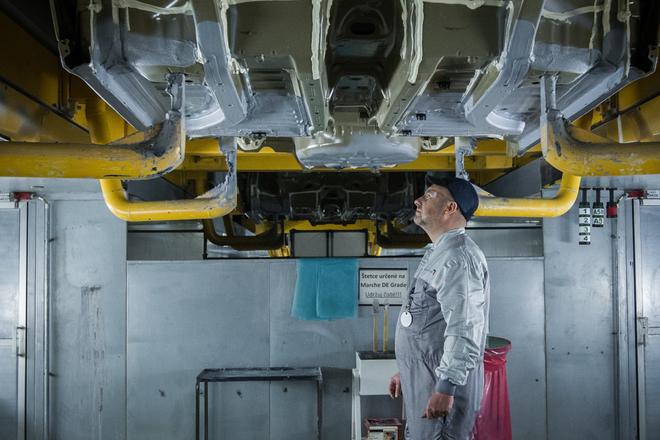The Slovak economy grew during the third quarter of 2021, but slower than originally expected. Weaker economic growth was already indicated by September's figures in industry, foreign trade and partly construction. Analysts attribute the sluggish growth dynamics to global supply chain problems, where industry in particular was hit hard.
“Economic growth slowed down due to the global supply chain crisis, especially the semiconductor shortage in the automotive industry,” Michal Lehuta, analyst with VÚB banka, wrote in his memo to the flash estimate of GDP
for the third quarter of 2021, released by the Statistics Office. “This is one of the reasons why Slovakia’s GDP has not yet regained its pre-crisis maximum levels from the end of 2019.”
Gross domestic product (GDP) at constant prices grew by 1.3 percent y-o-y in the third quarter. Adjusted for seasonal effects, GDP increased by 1.3 percent y-o-y, and 0.4 percent q-o-q, based on data of the Statistics Office. The value of GDP at current prices in the third quarter exceeded €25.6 billion, up 4.3 percent y-o-y.
The growth of the Slovak economy during the summer disappointed and lagged significantly behind most other EU and eurozone countries, first due to a higher share of those sectors significantly hit by bottlenecks in supply chains, especially the automotive sector. Based on the Eurostat’s first preliminary estimate from late October, the EU economy grew by an average of 2.1 percent in the third quarter and the euro area economy by 2.2 percent, UniCredit Bank analyst Ľubomír Koršňák wrote in his memo.
The structure of GDP has not yet been published by the Statistics Office as it will do so together with the refinement of the figures at the beginning of December. However, the Office indicated in its commentary that the modest growth of the economy was mainly influenced by domestic demand and, conversely, foreign demand was declining, or Slovak exports were declining due to restrictions in the production chain. However, somewhat surprisingly, the Statistics Office further stated that the automotive industry still contributed to growth in added value.
“Yet we assume that this remark was mainly related to the year-on-year comparison, where the still relatively favourable base effect may still have contributed to the growth,” said Koršňák, adding that on the contrary, GDP growth was mostly hampered by the construction and land transport sectors.
Due to the weaker third quarter and the materialisation of more risks for the last quarter of this year, especially the more difficult autumn wave of the pandemic, as well as the continuation of bottlenecks in the supply chains, Koršňák and Lehuta revised their estimate of this year's economic growth downward, to 3 - 3.1 percent and 3.3 pecent, respectively.


 Illustrative stock photo (source: Sme)
Illustrative stock photo (source: Sme)